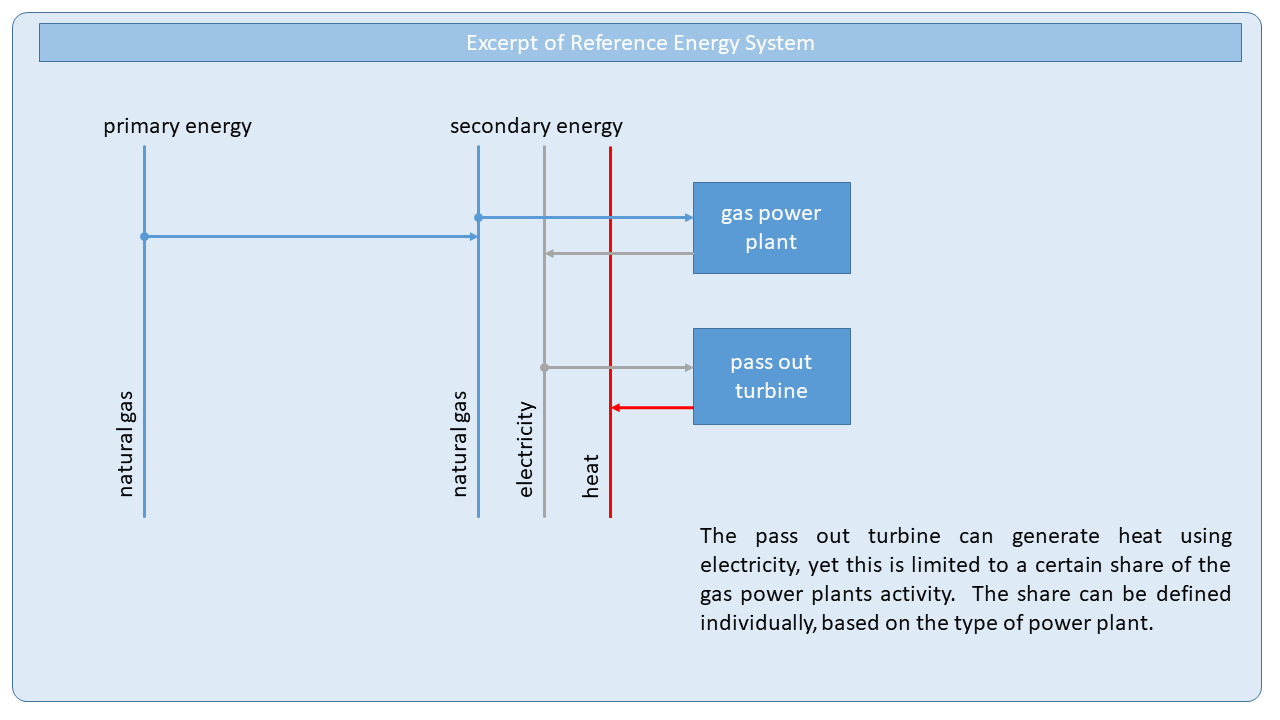Add-on technologies
Add-on technologies in the global model refer to a distinct formulation in MESSAGEix. The formulation is used to represent two main types of technical extensions/options for technologies. Add-on technologies provide additional modes of operation for a single or multiple technologies. They can also be used to depict emission mitigation options.
General description of add-on technologies
Add-on technologies can be defined using all the same parameters as any other technology. What makes a technology an add-on technology, is the fact that their activity is bound to the activity of one or more other technologies, henceforth referred to as the parent technology. The mathematical formulation can be found here. One of the main benefits of the add-on technology formulation, over specifying an alternative mode, is that it allows a single add-on technology to be coupled to the activity of multiple parent technologies. Furthermore, multiple add-on technologies can be linked to the activity of a single parent technology.
Modelling Combined Heat Powerplants (CHPs)
In the global model, there are numerous electricity generation technologies (cf. Section Electricity). A separate technology, known as a pass out turbine, is represented in the model to provide select electricity generation technologies the option to reduce their electricity output in favor of generating electricity and heat. The pass out turbine, which is a steam turbine in which a certain amount of the pressurized steam is passed out of the turbine for the purpose of heat production, is restricted to a share of the activity of the selected electricity generation technologies. Technically, this means that the electricity output of the electricity generation technologies remains unaltered, yet each unit of heat generated by the pass out turbine, requires a certain electricity input. The figure below is an excerpt of the Reference Energy System (RES), showing how the pass-out turbine is modelled.

Fig. 18 Reference Energy System excerpt depicting the modelling of CHPs.
Modelling emission mitigation options using add-on technologies
CO2 emission mitigation options for electricity and synthetic fuel generation can be modelled either as green-field power plants with carbon, capture and storage capabilities (CCS), but there is also the possibility to retrofit existing fossil fuel based energy generation technologies with CCS units. The latter, which is less efficient than the greenfield option, but an effective transition option to minimize stranded assets in deep mitigation scenarios, is modelled using the add-on technology formulation. Analogue to the way in which CHPs are modelled, a separate CCS-retrofit unit is depicted in the model, which is constrained by the activity of the respective parent technologies. The CCS-retrofit option requires electricity as an input, therefore mimicking the efficiency reduction associated with the operation of the CCS-retrofit unit. Per unit of activity of the CCS-retrofit, CO2 emissions are reduced, which differ depending on the assumed capture rates. CCS-retrofits are available for: coal power plants including internal gasification combined cycle plants (IGCC), select gas power plants, biomass power plants, gas and coal fuel cells as well as for hydrogen and cement production.
In the global model, emission mitigation options are modelled using add-on technologies for several other emission sources. N2O emissions from nitirc and adipic acid are driven by industrial GDP and CH4 landfill emissions are driven by population (Rao and Riahi, 2006 [81]). As both GDP and population are model inputs, the developments for these specific sources are therefore not endogenous to the model. Similarly, HFC and SF6 emissions are linked to specific useful energy demands, which are again a model input, and electricity transmission, respectively. In order to provide mitigation options for these emissions sources, depending on the source, one or several mitigation options are modelled. For each source, the combined activity and therefore the mitigation is coupled to the activity of the parent technology. The share of the total emissions which can be reduced is limited to the technical feasibility and the combination of which mitigation technologies are employed are economically driven.